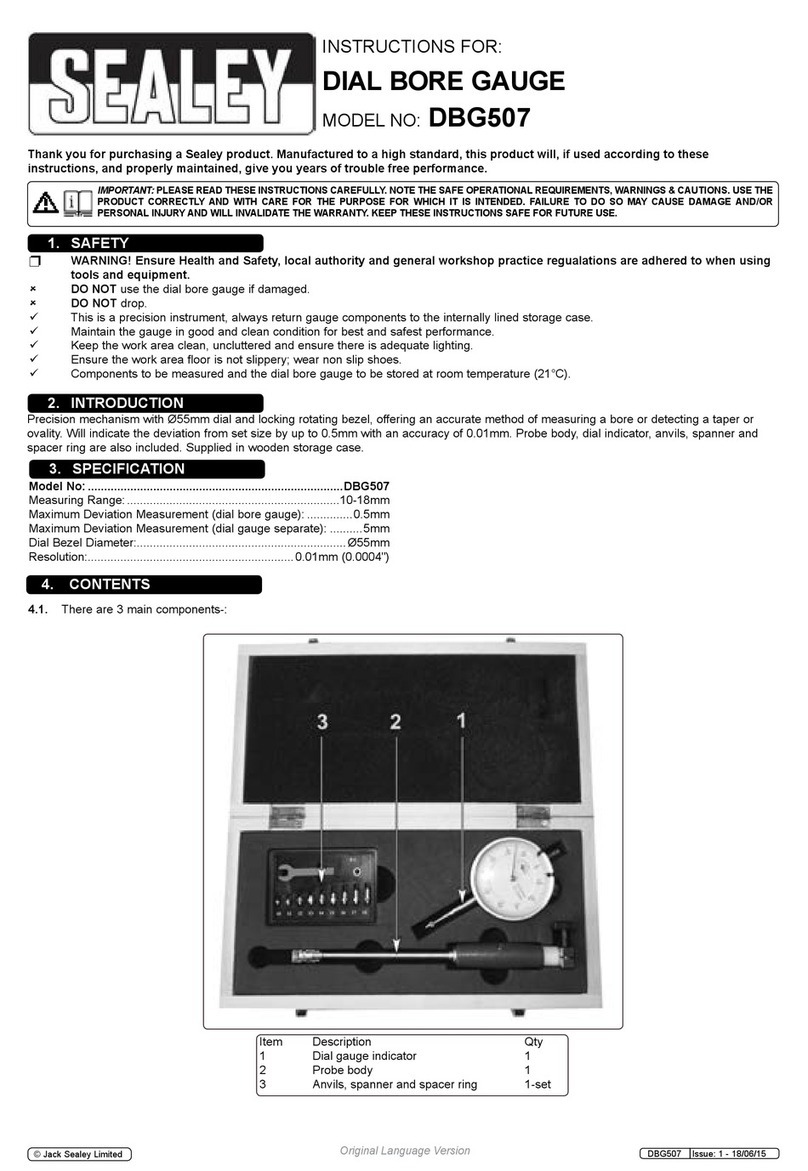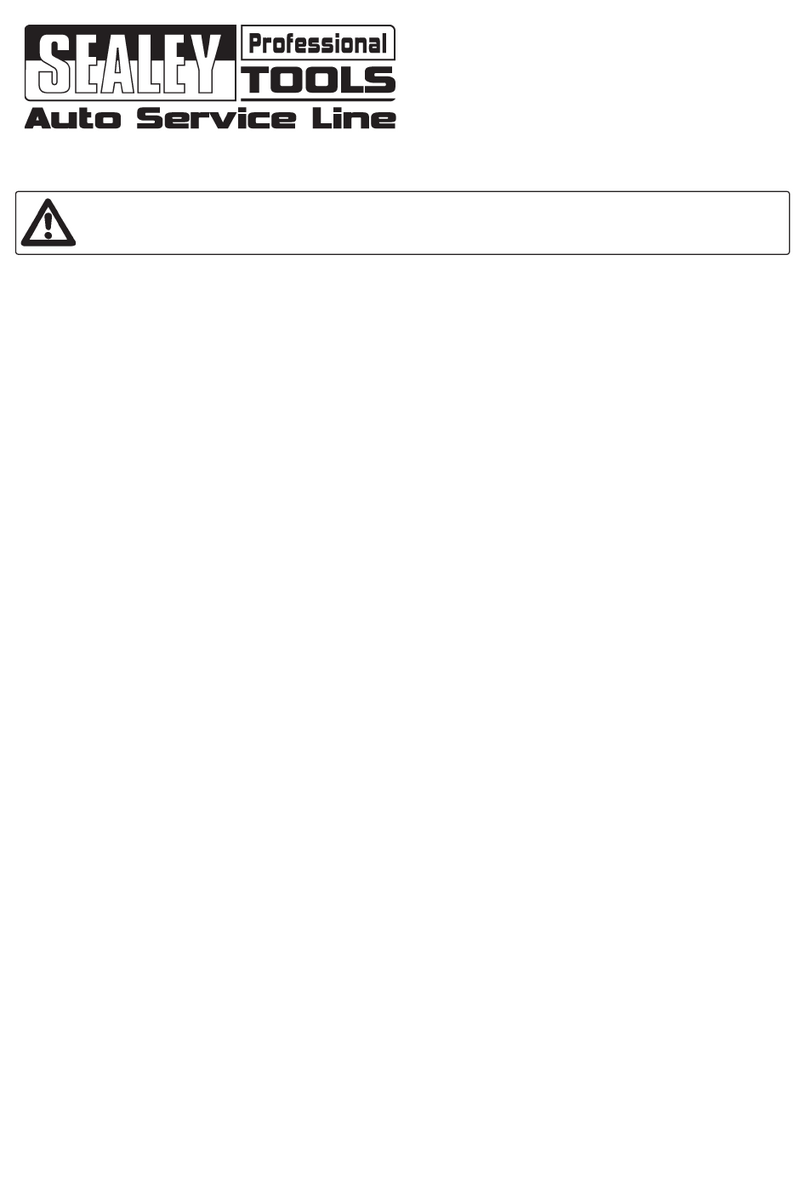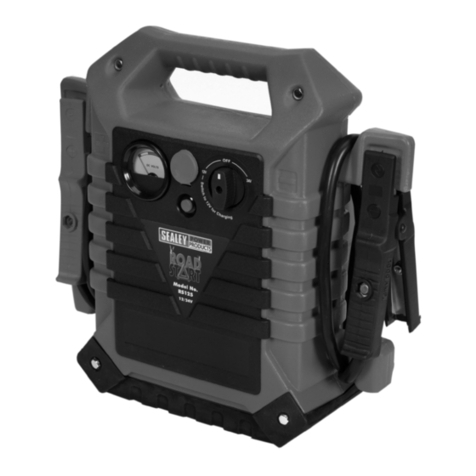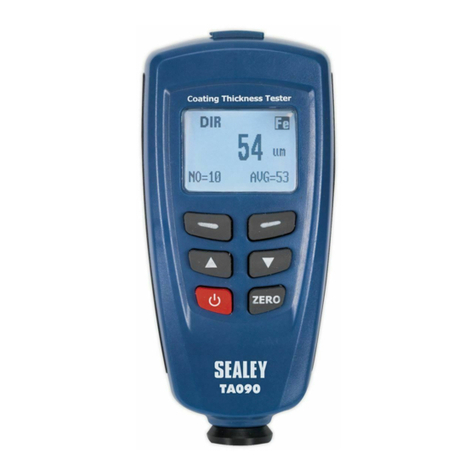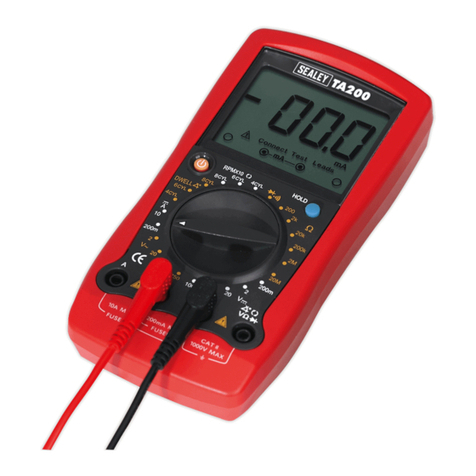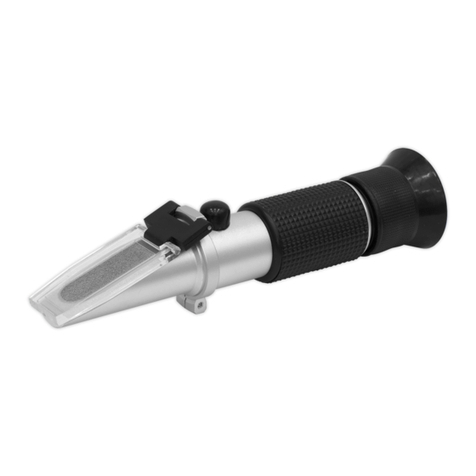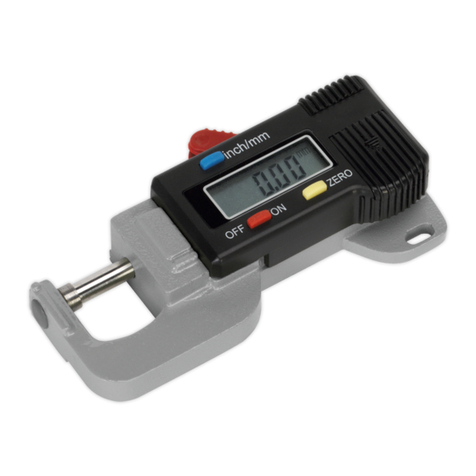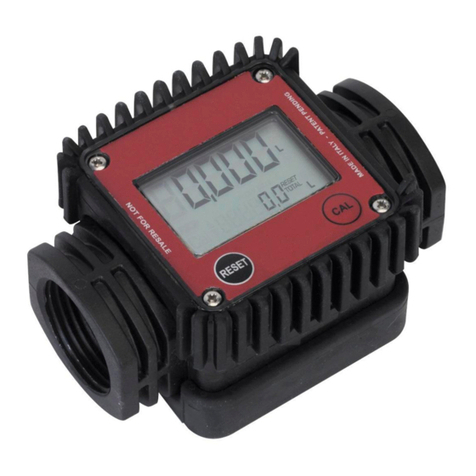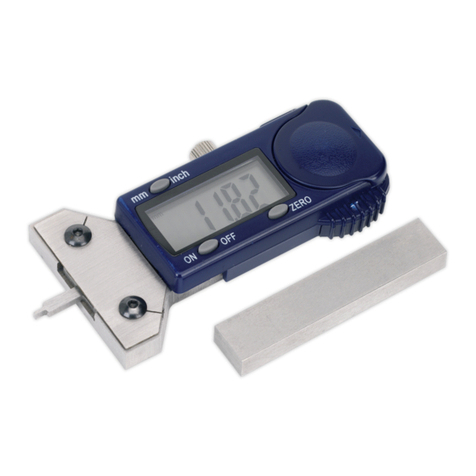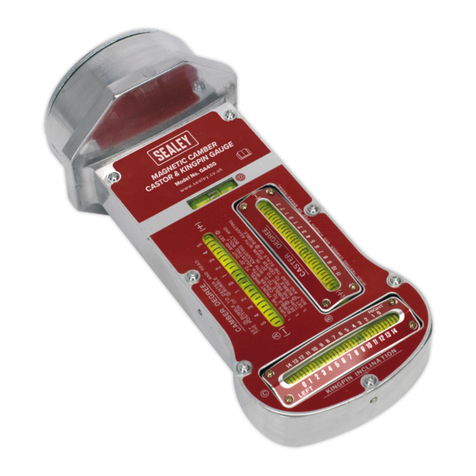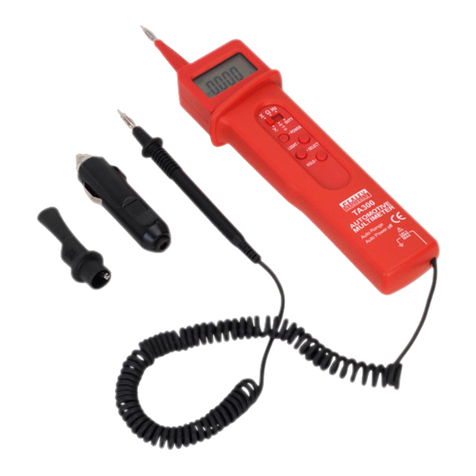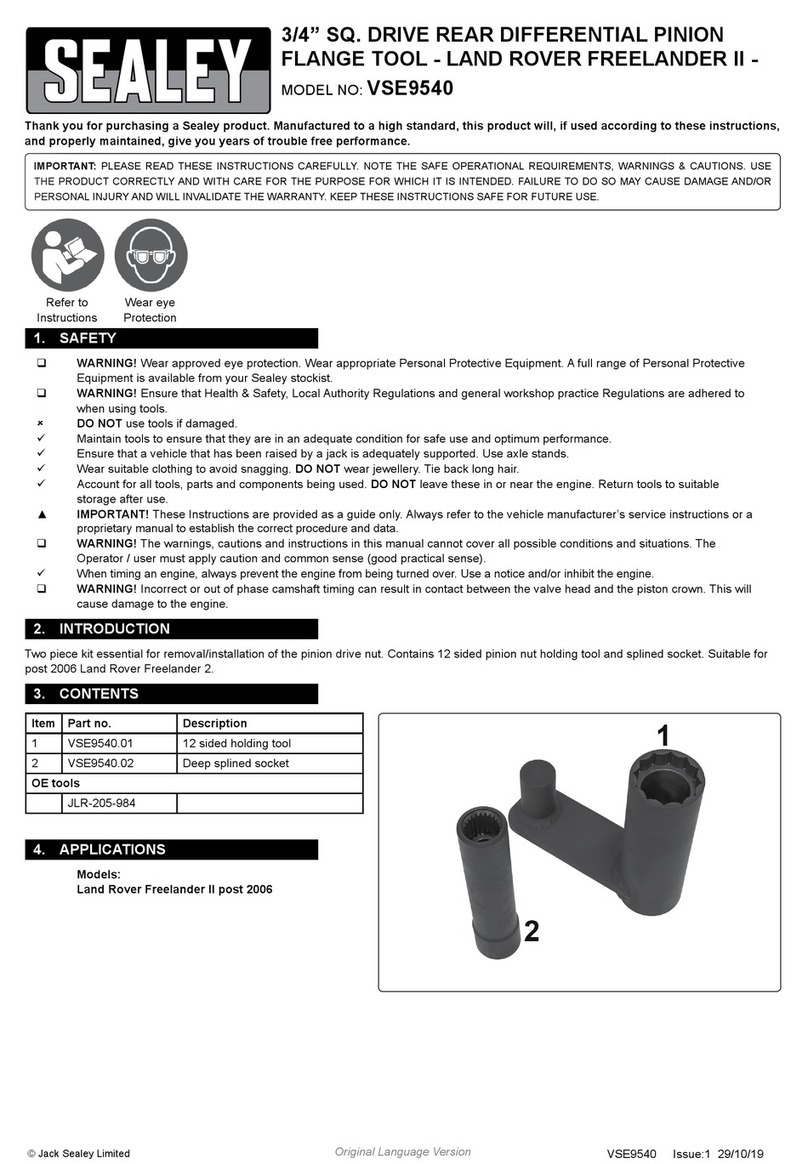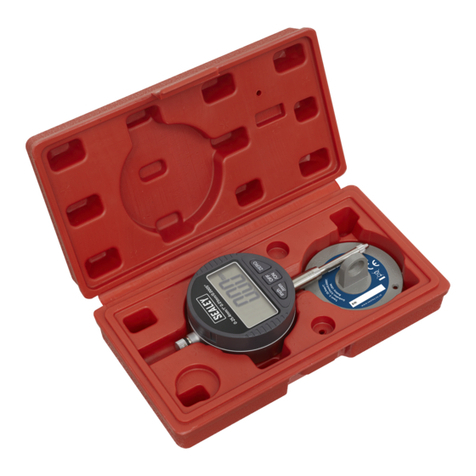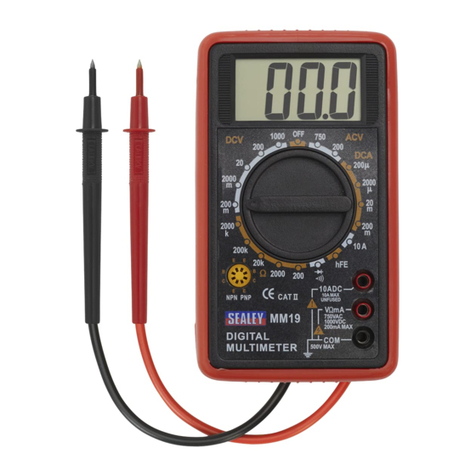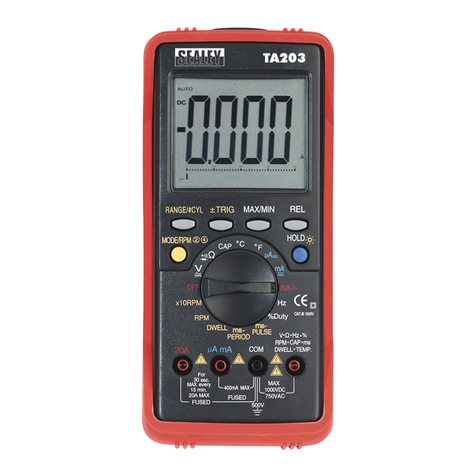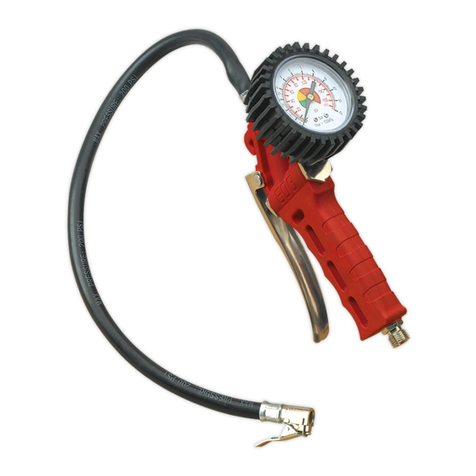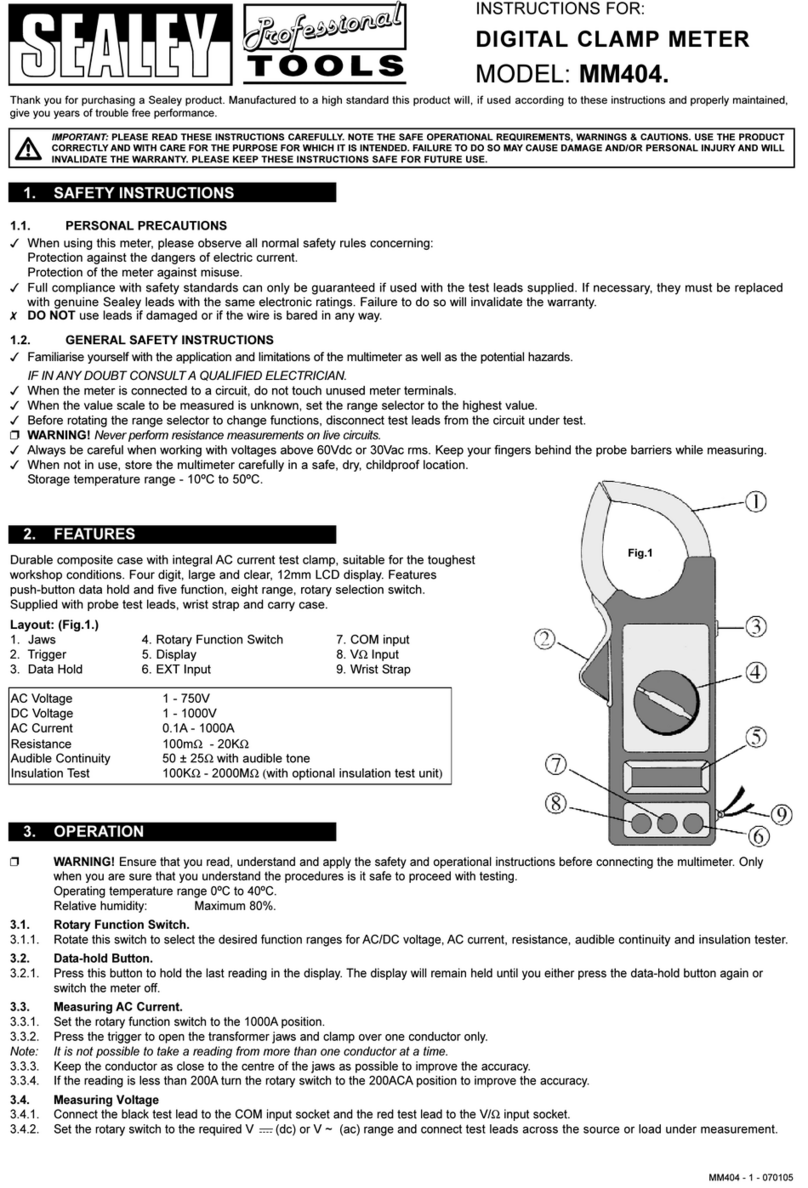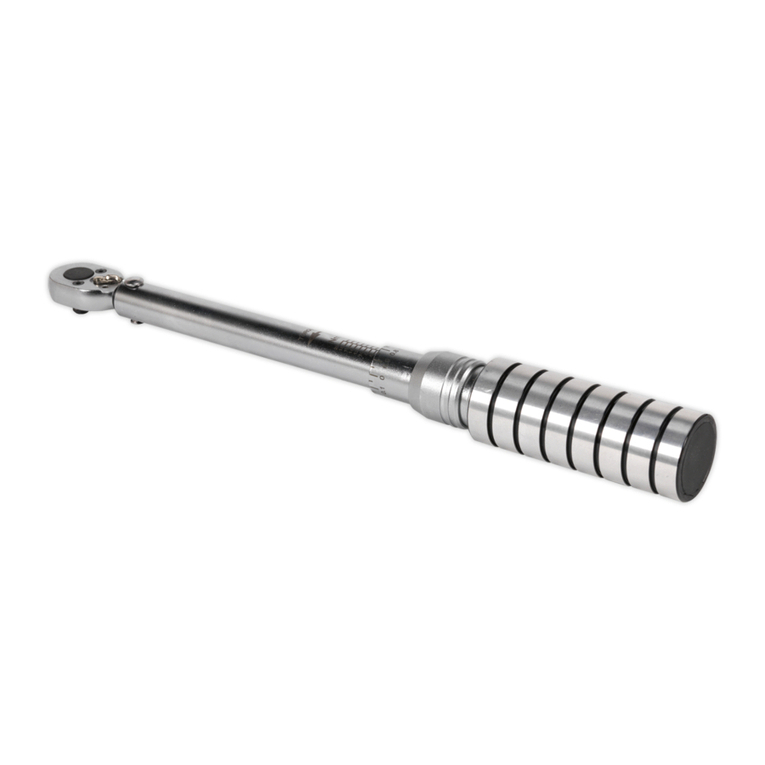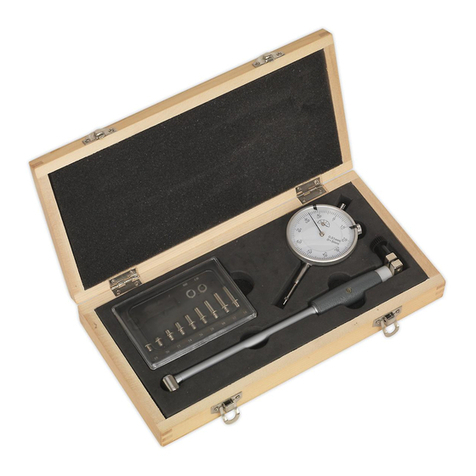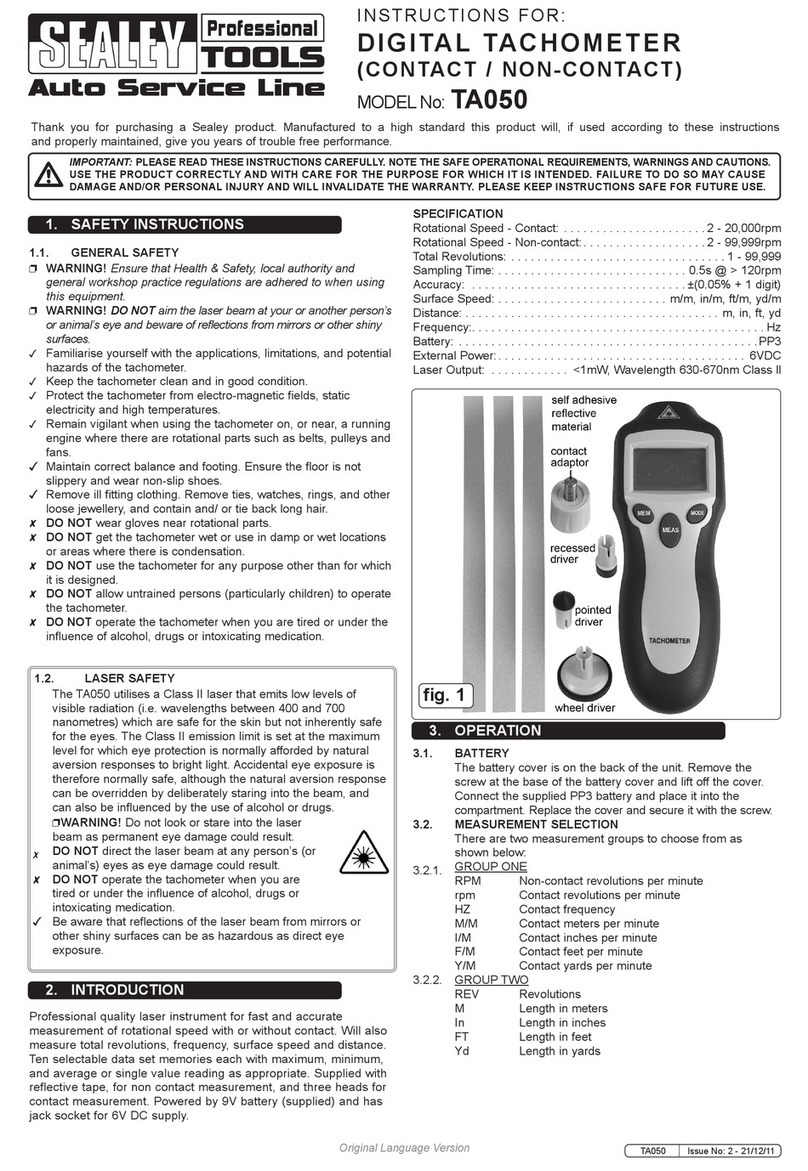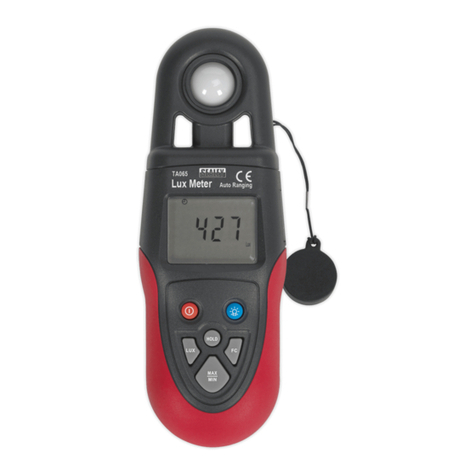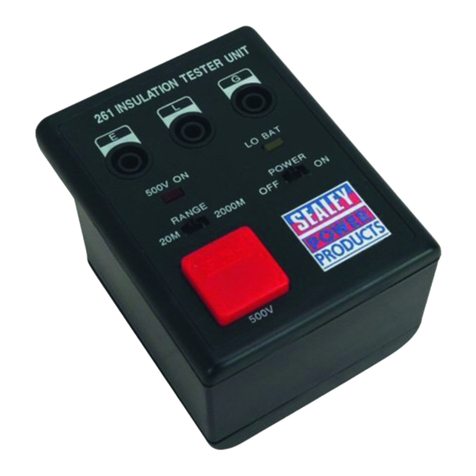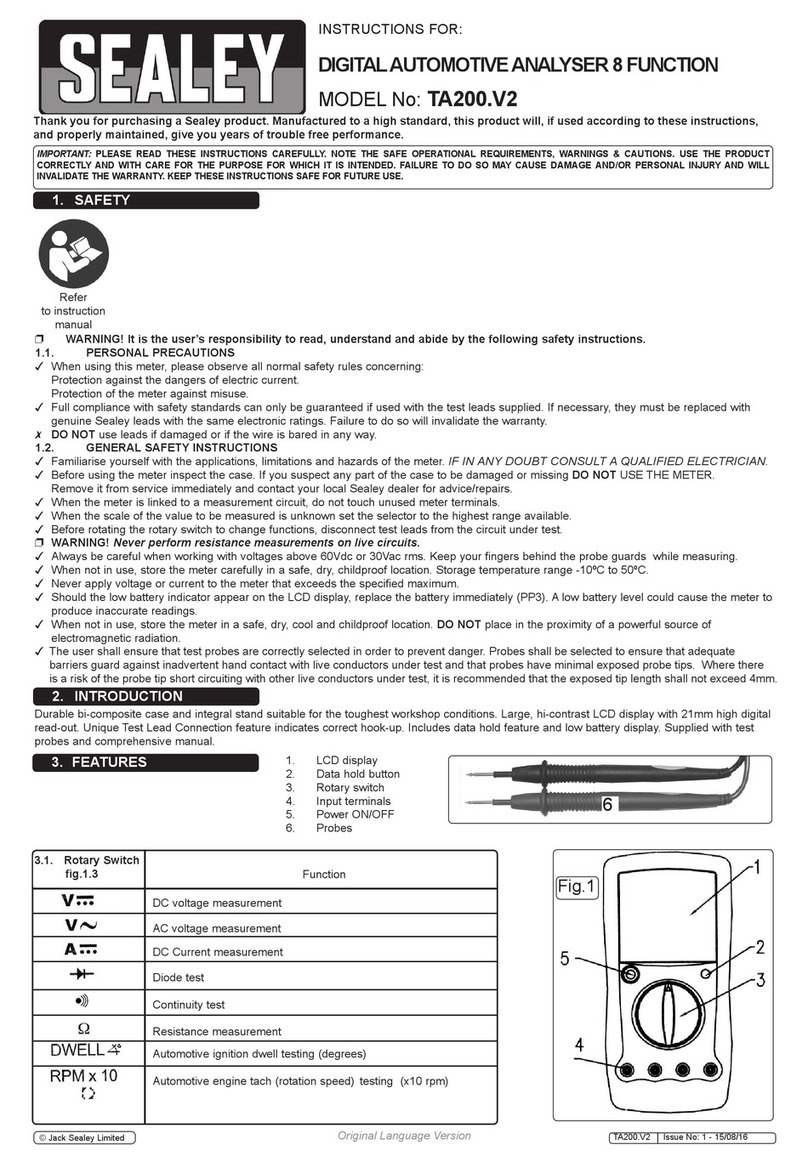INSTRUCTIONS FOR:
MOTORCYCLE COMPRESSION AND
FUEL PRESSURE GAUGE 3PC
MODEL No: MS100
1. SAFETY INSTRUCTIONS
IMPORTANT: Always refer to the vehicle manufacturer’s
service instructions, or proprietary manual to establish the
current procedure and data.These instructions are
provided as a guide only.
WARNING! Ensure all Health and Safety, local authority,
and general workshop practice regulations are strictly
adhered to when using product.
Maintain tools in good and clean condition for best and
safest performance.DO NOT use test kit if damaged.
Account for all tools and parts being used and do not leave
them in, or on the engine after use.
Ensure you have read and understood the safety aspects of
dealing with the fuel injection system and petrol in general
before commencing.
Fuel Hazards:
WARNING! Petrol fumes and battery gases are explosive.
DO NOT smoke or allow an open flame or sparks in the
work area.
Keep a dry chemical (class B) fire extinguisher near to the
working area.
Avoid fire hazard by using caution when disconnecting fuel
lines and installing adaptors - some spillage is inevitable.
When connecting to or disconnecting from a fuel system,
relieve pressure from system and wrap a cloth around the
fuel line fitting to absorb any fuel leakage. Wipe up fuel
spills immediately.
Fuel Leaks
Constantly check gauge and adaptor connections for
leakage. If you see leakage turn off the ignition or disable
the fuel pump, relieve fuel pressure if necessary and correct
leaks before continuing.
DO NOT let fuel drip or spill onto a hot engine.
Wipe up fuel spills immediately.
When using tee adaptors, secure hose with hose clamps to
ensure leak-free connections.
Check all adaptor sealing washers and 'O' rings are in good
condition before use.
DO NOT allow fuel to remain in the adaptors or hoses after
use.
Personal / Operation
Wear approved eye protection. A full range of personal
safety equipment is available from your Sealey dealer.
Keep yourself, clothing and test equipment away from all
moving or hot engine parts.
Do not wear jewellery and tie back long hair.
Before performing a test with the engine running (unless
the manufacturer's manual states otherwise), set the
parking brake and place the gear selector in neutral or
park, and block the drive wheels.
Exhaust gas contains deadly poisonous gases. The test
area must be well ventilated - route the exhaust gas outdoors.
Before repairing the fuel system, turn off the ignition switch
and disconnect the battery per manufacturer's procedure.
Never disconnect the battery whilst the engine is running.
Thank you for purchasing a Sealey product. Manufactured to a high standard this product will, if used according to these instructions
and properly maintained, give you years of trouble free performance.
IMPORTANT: PLEASE READ THESE INSTRUCTIONS CAREFULLY. NOTE THE SAFE OPERATIONAL REQUIREMENTS, WARNINGS AND CAUTIONS.
USE THE PRODUCT CORRECTLY AND WITH CARE FOR THE PURPOSE FOR WHICH IT IS INTENDED. FAILURE TO DO SO MAY CAUSE DAMAGE
AND/OR PERSONAL INJURY AND WILL INVALIDATE THE WARRANTY. PLEASE KEEP INSTRUCTIONS SAFE FOR FUTURE USE.
WARNING! DO NOT use this kit or the components from this kit on diesel fuel systems or high pressure petrol injection systems
(in excess of 145psi). Ensure you have read and understood the safety aspects of dealing with the fuel injection system and petrol in
general before commencing.
2. INTRODUCTION
Set of three gauges with connectors and adaptors for testing compression
and fuel pressure on motorcycles. Gauges range from 0-300psi for
compression testing , 0-7bar (0-100psi) for fuel pressure and 0-1bar
(0-100kPa) for low pressure fuel.
Model No:.................................MS100
Spark Plug Sizes: ..........................8, 10, 12, 14
Hose Lengths:.............................220mm
Fuel Connector Sizes: ......................Ø 6.4, 7.9mm
Original Language Version
© Jack Sealey Limited MS100 Issue 2 (P) - 17/07/13
